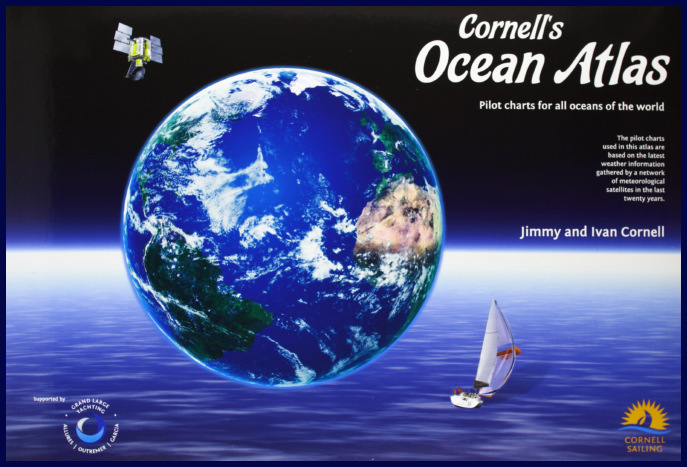The Blue View - Pilot Charts
/Want to know where the current along the west coast of South America is the strongest? How about the prevailing winds off St. Helena in April? As we were planning our Atlantic crossing, one of the references we used was the set of pilot charts for the North and South Atlantic. The NGA (National Geospatial-Intelligence Agency) Pilot Charts depict, graphically, weather conditions, sea states, prevailing winds and currents and a host of other information for different times of the year for all the oceans of the world.

We owe their existence to a U.S. Navy officer, Matthew F. Maury, who was an expert in marine meteorology, astronomy, and bathymetry. He developed the first wind and current charts in 1847 by analyzing and compiling data from thousands of ships' logs. From these charts, most of the current sea routes were established, as well as which areas of the oceans should be avoided at different times of the year. His invaluable contributions to meteorology and oceanography gained him international recognition, and he was variously referred to as the “Pathfinder of the Seas”, the “Father of Oceanography” and the “Father of Modern Naval Meteorology”. Quite the guy!
The descendents of Maury's wind and current charts are the NGA Pilot Charts, and there are now five sets – one for each of the oceans. Each set has a separate chart for every month of the year. The charts are divided into 5 degree rectangles, and within each rectangle, it is easy to determine the prevailing wind speed and direction, and the likelihood of gales, storms and calms. Each chart also shows the ocean currents, both direction and strength, average sea and air temperatures, ice limits, barometric pressures, wave heights and visibility. A lot of information is packed into each chart, and every time I use them, I discover something new.
There are a few caveats to their use, however. First, they are not, of course, weather forecasts – only historical averages of weather in a given area. It is little consolation to know there was only a 5% chance of encountering a gale when we are sitting in the middle of one.
The second caveat is a consequence of their very usefulness. For example, if mariners know a particular area is especially prone to hurricanes during the month of September, most vessels, especially any that cannot outrun a hurricane, will avoid that area at that time. Since the data regarding hurricanes is based on actual logs of vessels, and if very few vessels choose to sail through a hurricane, then the frequency and strength of these tropical storms will be underestimated.
The third caveat is that they are based on data collected over decades in the late 1800's and early 1900's. In my research, it's not clear whether data is still being collected and updated. If the earth is truly experiencing global weather changes, the data will become more inaccurate as time passes.
A final caveat is that many parts of the earth are affected by global cycles like the El Niño/La Niña years. Thus, a particular 5 degree rectangle of a pilot chart that indicates a 20% likelihood of a southerly wind may, in reality, be a 95% likelihood in an El Niño year and a 5% likelihood in other years.
Given all these caveats, we find that pilot charts are still very helpful, and they are one tool we use when planning long passages. We also check global weather forecasts to see whether the current year is an El Niño or La Niña year and what effect that will have on local weather. In addition, we research the predictions for tropical storms … will this be a good year or a bad one?
With all this planning, the conditions we encounter are still a crap shoot and depend on our luck as much as anything. Had we left Cape Town heading for Norfolk in the beginning of April as we had planned, we probably would have run into Tropical Storm Ana – the second earliest tropical storm to ever hit the east coast of the U.S.
Thus, the most important part of every passage may well be the hearty tot of rum we give Neptune on our departure.



